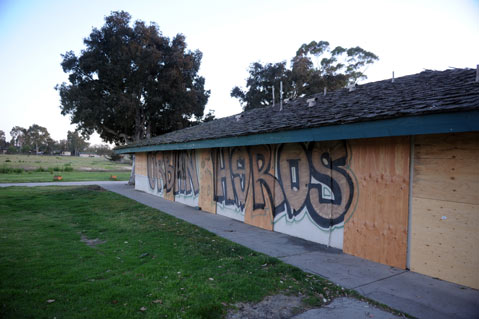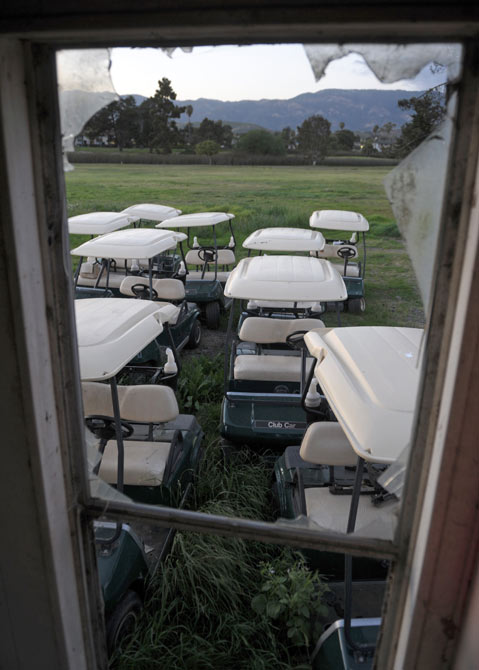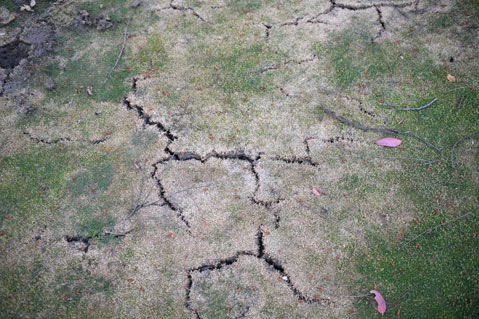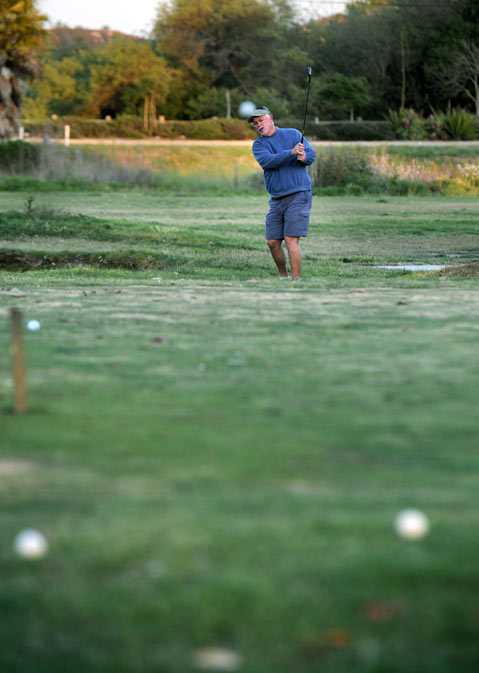Ocean Meadows Is Dead! Long Live Ocean Meadows!
Good-Bye to Golf Course, Hello to Restored Wetlands

As a lifelong golfer, I’ve come to appreciate most golf courses as reliable and often remarkable interfaces between humankind and the wild, places that use tiny white balls and manicured lawns to lure city dwellers deep into otherwise untamed surroundings. I’ve seen wild boar and tree-hopping turkeys in the golden hills south of San Jose, flocks of deer at dawn cutting through the thick Monterey Peninsula mist, ferret-like creatures ambling the deserts east of San Diego, dolphins leaping offshore the Big Island of Hawai‘i, and snakes swirling through Arizona sands. I know development displaces more than it protects, and that many links use more chemicals and water than nature should stomach, but I’d still say that some courses offer more frequent encounters with native fauna than even official wilderness areas.
Nowhere has this proved truer for me than at Ocean Meadows, the nine-hole course built nearly 50 years ago in Goleta. Amid sightings of coyotes and crawdads and rumors of black bears, it’s where, as a college student, I learned the differences between green herons and great herons, egrets and snowy egrets, Cooper’s hawks and white-tailed kites, and white-crowned sparrows and purple barn swallows. It’s also where I witnessed the single most exciting nature scene of my life: a red-tailed hawk ripping a three-foot gopher snake out of its burrow, flying to a tree branch overlooking the seventh hole, and then chomping away on the wriggling creature, all the while fending off a pesky crow.
Those days, however, are over, at least with a nine-iron in hand. The Ocean Meadows Golf Course closed for good on Tuesday, March 26, leaving the South Coast golf scene devoid of a relatively flat, affordable, regulation nine-hole course. But in an intriguing twist of fate — and in what may be the first reverse development of a golf course — Ocean Meadows will live on as a nature preserve. Its 63 acres were purchased for $7 million by the Trust for Public Land (which had donor support from various entities), and the trust is conveying the land to UCSB, which will work to restore the course into a functional ecosystem that feeds into the Devereux Slough and Coal Oil Point Reserve, essentially extending the 650-plus-acre Ellwood Bluffs complex all the way to Storke Road, with public access and trails throughout. There’s still much work to be done: Estimated costs for the restoration climb as high as $10 million, and so far, only about $1.7 million has been earmarked for that.
Today, Ocean Meadows exists in an odd limbo between golf course, public park, dog run, exercise zone, and de facto open space, and the new owners — who had to hop on the land deal quicker than there was time to lay out a concrete plan — are actively plotting how to manage the property as you read this. In the meantime, nature grows stronger at Ocean Meadows, where the mallards, coots, and Canadian geese are already enjoying greater reign over the land.
Dreams and Nightmares
“My dream was to make it into the finest nine-hole golf course in the country,” said Mark Green, the 82-year-old Los Angeles attorney who purchased the property in 1994. What he bought was a course inundated with seaside salts and tight restrictions on water usage. He soon learned why everyone called it “Ocean Ghettoes.”
“At a substantial cost, we had to literally rebuild the course while maintaining play,” said Green, who dumped “a number of seven-figure dollars” into the work, which was carried out by longtime course superintendent Simon Herrera. In due time, golfers noticed the shift, and for a time, the Ghettoes weren’t so ghetto. But then Glen Annie and Rancho San Marcos golf courses opened in the late 1990s, pulling some customers away, and so in 2005, Green pursued his grand plan to build about 30 homes around the course and rebuild the clubhouse into a lively restaurant and bar. “The process was really to preserve the golf course,” said Green, but then the economy “went into the toilet.”

Though the plans were shelved, the Trust for Public Land (TPL) took notice, saw an opportunity to restore the wetlands — which is a major goal for California conservationists — and put some feelers out to Green in 2008. “We figured there was nothing to lose,” said Carla Frisk, who handles Santa Barbara County issues for TPL.
At first, Green wasn’t interested. Though approaching his eighties, he went back to practicing law to subsidize the course, hoping that the economy would swing back. But eventually, it just became impossible, said Green, explaining, “At some point, you have to make a realistic choice.” That choice was selling 63 of his roughly 70 acres to TPL, retaining the last seven acres — which are along the first and third holes, adjacent to existing UCSB housing — as a site for 28 homes, which he hopes to break ground on this year. “Instead of turning the whole golf course into housing as a way out of the dilemma, I just thought that the Trust for Public Land approach to reclamation was a better choice in the long run for the public,” said Green. “If you’re not gonna have Ocean Meadows, I think you’re gonna have the best alternative.”
While everyone understood Green’s decision, not all are happy, most notably the course’s 72-year-old manager, Barbara Metcalf, who worked there for a dozen years. “It’s a big loss to our whole community,” said Metcalf a couple of days after she boarded up the clubhouse for good — boards that were covered in graffiti the next day. Metcalf is also suspicious of the plans. “The wildlife that’s been here has been here for 50-plus years, and for them to come in and change it is really doing more harm than good,” she said. “We’ve lost more than we are ever going to gain from it.”
That said, most golfers I’ve spoken with are okay with Green’s decision, although quite a few wonder why it couldn’t have stayed a golf course until the restoration work was ready to go. The answer, according to Frisk, is that the donor money (which includes money from the Goleta Valley Land Trust) was contingent on purchasing the property as a preserve, which meant golfing could not continue; plus, even if that wasn’t the case, neither TPL nor UCSB has any interest in or budget for running a golf course.

Wetland Wonderland
Ocean Meadows was probably part of the Devereux Slough before one million cubic yards of dirt were backfilled onto the property during its creation in 1965. But no one knows what the natural ecosystem really was like or, perhaps more significantly, what sort of restoration efforts will work best there today.
“Even if we knew what was there before, we might not be able to go back to what it was,” said Carla D’Antonio, a professor at UCSB’s Ecology, Evolution, and Marine Biology Department who works with the Cheadle Center for Biodiversity & Ecological Restoration (CCBER), the long-term manager of the property. “We have a potentially different environmental template on which to build than what was in the past,” she explained. Now there exists housing around the property (including new three-story university complexes), a disrupted hydrology, a changing climate, and of course, the old backfilled dirt. “When you unbury all that soil, we need to know what plants will grow on it,” she explained. (As for the 2011 rumors about old oil wells contaminating the underground, D’Antonio explained, “All those wells have been thoroughly evaluated, and there are no known problems.”)
Ever since this purchase was a possibility, D’Antonio and other CCBER experts began exploring the best restoration strategy; studying old maps, aerial photographs, and historic journals; and assessing how the Chumash people may have managed the land before European contact. In the next year or so, as the project goes through the permitting rigmarole that will require approvals from both the County of Santa Barbara and the even more rigorous California Coastal Commission, UCSB professors and students will continue their investigations, learning about ecology, habitat restoration, endangered species like the tidewater goby, and government planning procedures along the way. Eventually, said D’Antonio, “It will be a nature park — not with a swing-set, but with trails.” And there are other benefits, too, as the extended wetland will better absorb flood waters during heavy rains and serve as a buffer for sea-level rise in the decades to come.
Until then, D’Antonio said that UCSB will be assigning some security detail to the site, mowing the lawns to keep nonnative weeds and grasses from going crazy, maintaining it so that it doesn’t “look like an abandoned piece of land,” and making clear that it’s not a golf course anymore, perhaps by removing the greens. “There is the danger of this being a little free-for-all initially,” said D’Antonio. “That’s why the campus wants to get in there right away and let the public know what’s going on.
Parting Shots
Since Ocean Meadows officially closed on March 26, I’ve visited twice. The first time, I sat on the ninth hole, sipping coffee as my son chased geese and my daughter crawled around on the grass. A man who was walking his dog stopped to talk, and we reminisced about our many years playing there, and how it’s too bad to see it go, but that a nature preserve is a pretty cool solution. Then a foursome showed up and started playing.

A few days later, I returned with my kids again, this time with my wedges and a few balls. I took a final swinging stroll around the course, where a smattering of golfers battled thickening grass, cracking greens, and a growing number of dog walkers, stroller joggers, and bird watchers. No one got hit, but the potential for conflict seemed on the rise.
At the end of my round, while loading the kids up, I recognized a good friend walking to his car. “I’m gonna miss it,” said Willy the bartender. “To me, this was the happiest place on earth.” Ideally, in the decades to come, that’s something thousands more will say about Ocean Meadows, and not just we nature-loving golfers.



